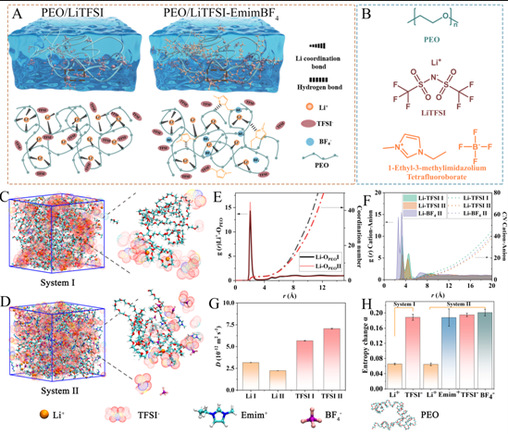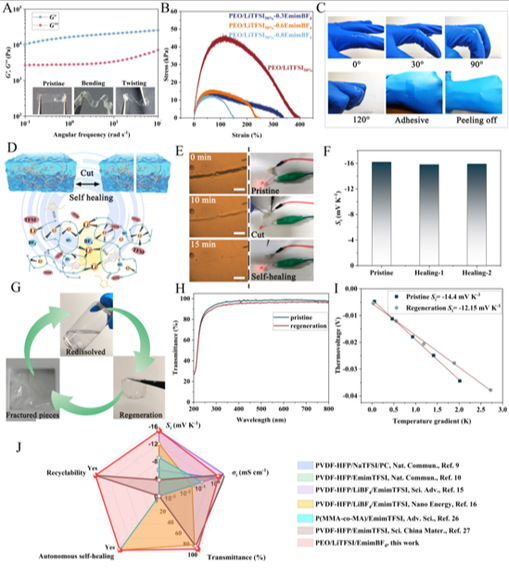Recently, an important breakthrough in the field of n-type ionic thermoelectric hydrogel materials was achieved by Professor Jiang Wan and Professor Wang Lianjun’s team from Donghua University’s College of Materials Science and Engineering. This research outcome was published in the journal Science Advance, with Zhao Wei, a Ph.D. student from the Class of 2019 in the College of Materials Science and Engineering, as the first author. Professor Jiang Wan, Professor Wang Lianjun, and Dr. Zhang Qihao from the Karlsruhe Institute of Technology in Germany are the co-corresponding authors of the paper.
The development of n-type ionic gels has lagged behind despite the increasing attention on ion thermoelectric materials driven by the Soret effect, which offers significant thermoelectric potential for applications such as low-grade heat energy harvesting and high-sensitivity sensors. To address the challenges related to the lack of corresponding n-type components and the demand for functional ionic gels with self-healing and recyclable properties, the team has achieved rapid self-healing and recyclable high-performance n-type poly (ethylene oxide) (PEO)-based ion thermoelectric gels by utilizing the synergistic effects of metal coordination and ion binding.

Figure 1 depicts the design principle and molecular dynamics simulation results of the n-type PEO-based thermoelectric ion gel with metal coordination and ion-selective binding

Figure 2 illustrates the multifunctionality of the PEO/LiTFSI/EmimBF4 ion gel
The research work utilizes metal ion coordination and ion-selective binding to produce a high-performance, self-healing, and recyclable n-type thermoelectric ion gel. The internal interaction mechanism of the gel is revealed through a combination of theoretical calculations and experimental analysis. This study provides a feasible approach for designing gel materials with significant thermoelectric potential for applications in low-grade heat harvesting, wearable devices, and thermal flux sensing.


